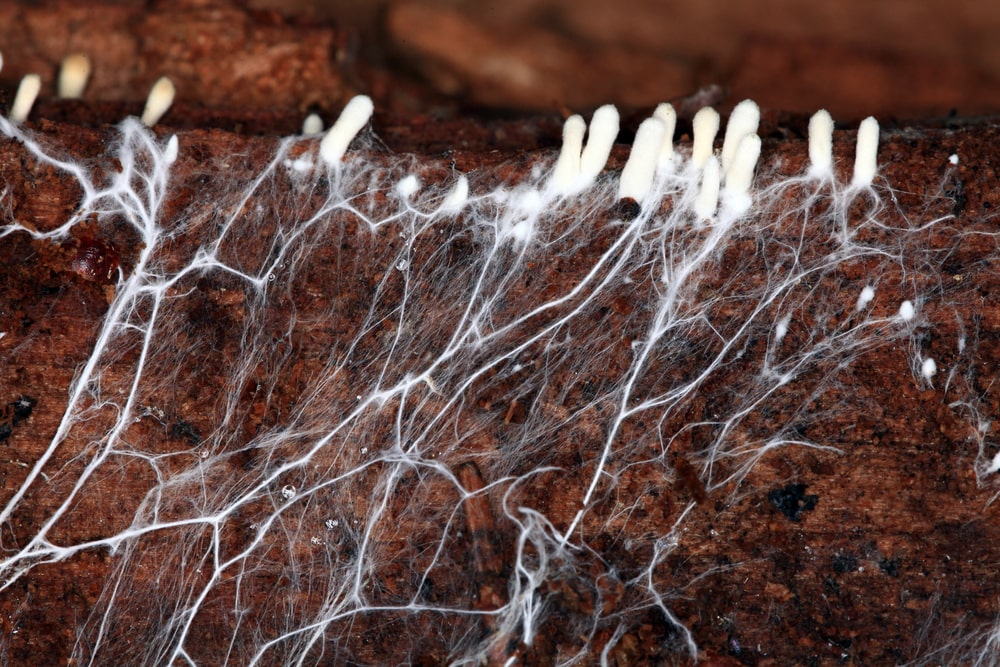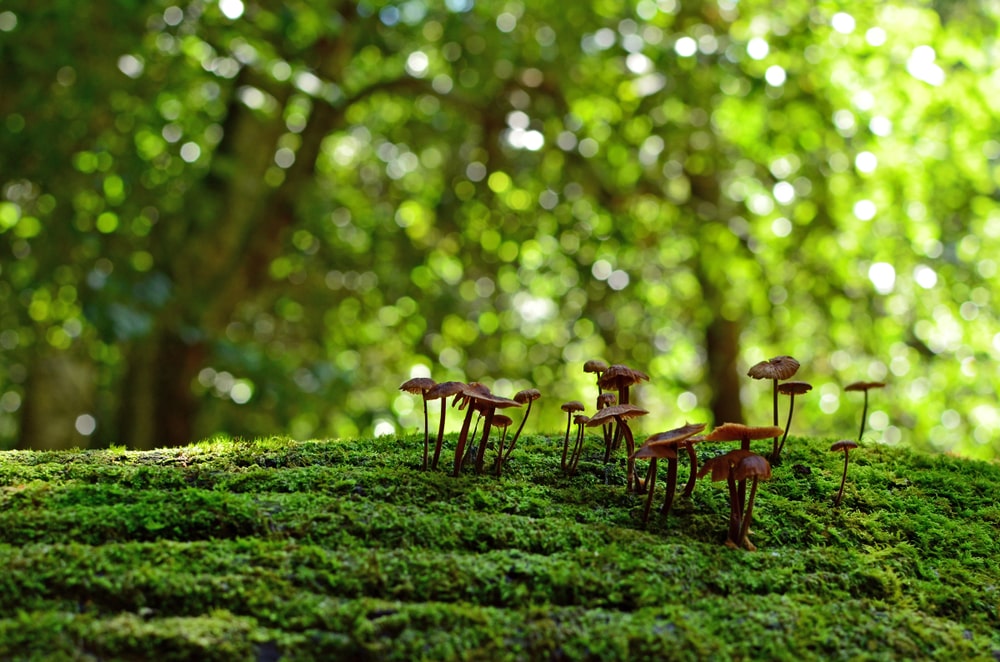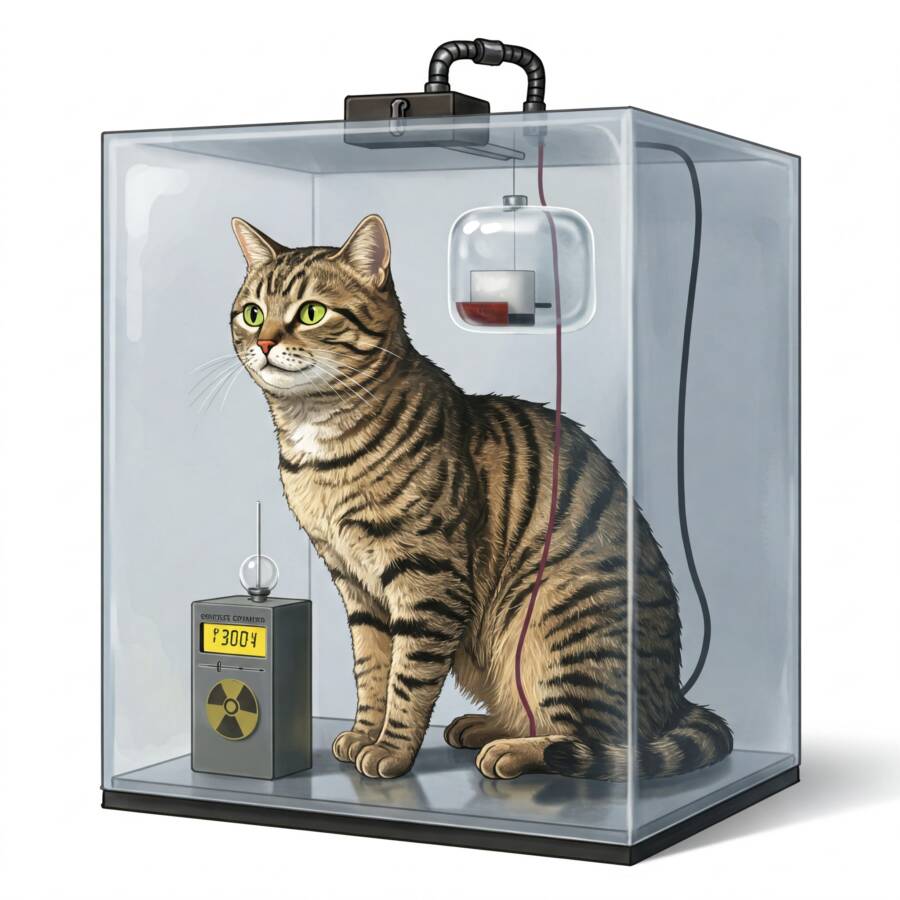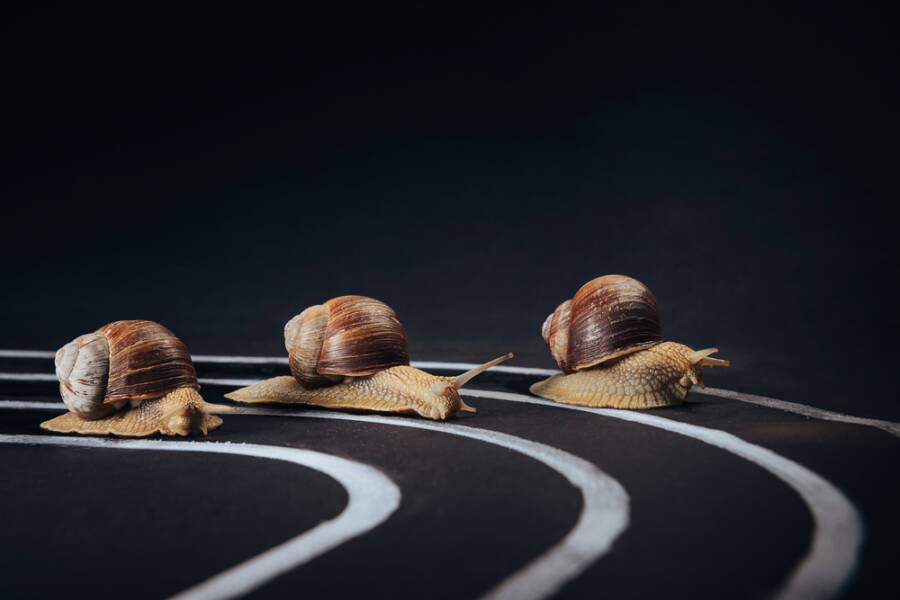Are you curious to learn more about the most diverse organisms on Earth? When it comes to fungi, there are three things you need to remember: they’re big and incredibly old, and some of them can turn ants into zombies!
To say that they’re the most popular kingdom on the planet would be an understatement. There are an estimated 3.8 million fungi all over the world, and yet, over 90% of them are currently unknown to science.
Moreover, you might be shocked to learn that the mushroom kingdom can be quite animalistic. After all, they breathe like us, and some of them even eat flesh. But there’s so much more to know, so let’s dive together into the complex world of fungi!

They can glow in the dark.
As weird as it sounds, some mushrooms are bioluminescent. They get to this stage because of luciferins, which are the same compounds that make fireflies light up at night and even some sea creatures glow.
This rather surprising skill, commonly known as foxfire, has been developed so they can attract insects. Then, they spread the mushroom spores elsewhere in the forest, which allows the fungi to reproduce.
One great example is the Mycena haematopus, also known as the bleeding fairy helmet, which can be easily found in Europe, Asia, and North America.
In the near future, this wonderful and natural phenomenon of bioluminescence could be used to genetically engineer luminescent trees as a more efficient and green alternative to streetlights.
They have more things in common with us than they do with plants.
A fungus is neither a plant nor an animal. In fact, it belongs to its own “fungi kingdom.” However, from a genetic perspective, they are closer to animals than plants.
Just like us, they “breathe in” oxygen, giving out CO2 and contributing to global warming. Unlike plants, fungi don’t need sunlight to reproduce. Instead, they simply rely on other organisms for food, as animals do.
At the same time, their cell walls are filled with chitin, which is found in the exoskeletons of insects, the shells of crustaceans, and also the beaks of octopuses.
Naturally, we have a lot less in common with a toadstool than with a chimp. However, next time you’re tucking into mushrooms on toast because of their meaty texture, you’ll know why. They are much closer to animal life than most people would think.
Some can turn ants into “zombies.”
Some fungi might create zombie ants. Yep, you’ve read that right. The fungus responsible for this phenomenon is Ophiocordyceps unilateralis, which can be found deep in the Amazon rainforest.
This rather sinister parasite can infect the carpenter ant, growing through its body before taking over its brain. Then, it compels the poor “brainwashed” insect to leave the nest and climb to the closest plant, which happens to be the perfect environmental condition for fungus growth.
Afterward, it consumes the ant’s innards and sends a very long stalk through its head, growing into a capsule of pores. Ultimately, these rain down on other unsuspecting victims, perpetuating the grim cycle.
Some fungi eat 50,000 leaves a day.
Some fungi will have a more benign relationship with ants. Leaf-cutting ants in South and Central America work in perfect harmony with Leucoagaricus gongylophorus.
This particular fungus lives five meters underground and enlists an entire army of ants to collect freshly cut leaves for it to eat. It can even tell the ants what type of leaf to eat.
Basically, it “communicates” with them via chemical signals. Scouts also work like waiters in a restaurant, carrying along the food order to the workers above ground.
The sight of leafcutter-ant “highways” tons of bugs, carrying up to 50,000 leaves a day. To be quite honest, it’s an impressive show. Besides, Pseudonocardia bacteria cultures are brought up on the ant-cuticle, which protects Leucoagaricus from various diseases and any other invasive fungi. In exchange, the leucoagaricus offers the ants a regular food supply of mini-mushrooms.

The largest living thing on Earth is a fungus.
Just forget the blue whale! The biggest living organism on the planet is a famous fungus known as the “honey mushroom.” However, despite its rather sweet-sounding name, it can kill trees, feeding off both live and dead wood for nutrients.
The honey mushroom was recently discovered (in 1998), and it covers no less than 2,384 acres, which is almost 10 square kilometers, right in the middle of the Blue Mountains in Oregon, US.
It’s a giant fungus, and it has been so for a while. Scientists believe that it is 2,400 years old—maybe even 8,650 years old!
Our feet contain over 200 types of fungi.
If you’re suffering from itchy feet, then you should blame it on the fungi. Even if you are the kind of person who takes two showers a day, you might be surprised to find out that human feet foster nearly 200 types of fungi.
Even if they live all over our bodies, their favorite spots to colonize and grow are the heels (where we can find no less than 80 different types), between the toes (40), and, of course, beneath the toenails (60).
They help trees talk to each other.
Did you know that fungi basically invented the internet? Well, maybe not invented, but definitely inspired. Under every forest and piece of wood, there’s a wide and complex clandestine network of roots, fungi, and bacteria that connects trees and plants to one another.
It even has its own name: “the wood wide web” (sounds familiar?) This super-secretive social network of mycorrhizal fungi is nearly 500 million years old.
The trees get the nutrients that the fungi acquire from the soil, like nitrogen and phosphorus. In return, the fungi get carbon-rich sugar from the trees’ roots.
It’s a wonderful and symbiotic relationship that lets trees have their own underground conversations, like issuing warnings about attacking insects, drought, and even disease.
Most raindrops in tropical forests have spores.
Mushrooms are largely responsible for the climate in rainforests. Here, fungi release masses of spores into the air. As they manage to float above the forest, they also attract a lot of moisture.
In other words, they act as nuclei for the formation of raindrops in clouds, which are low-lying in these warm and wet environments. When these super-tiny somersaulting balls fully collect enough water around them, they immediately fall back to earth as rain.
As a matter of fact, 90 percent of tropical raindrops have a particular fungal spore at their heart.
Fungi can cure diseases.
Some of you might be familiar with the antibiotic known as penicillin. Well, did you know that it was produced from a mold that’s basically a fungus?
Around 1929, a doctor in London, England, decided to write a paper on what he called “penicillin,” a term taken from the Penicillium notatum mold (also known as Penicillium chrysogenum).
The fungi could kill bacteria. His amazing discovery and research initiated a chain of events that would ultimately lead to the development of many antibiotics that would save countless lives.
On a similar note, the antibiotic cyclosporine is a very important immunosuppressant and is also used in organ transplants.
Since we discussed the zombie-making fungi, you might want to check out the wonderful series “The Last of Us,” which was inspired by this amazing (but dangerous) fungi.
There’s no point in getting so far and not giving this audiobook a try! “Entangled Life: How Fungi Make Our Worlds, Change Our Minds and Shape Our Futures” by Merlin Sheldrake is exactly what you need to “read” next!
If you’re interested in reading other articles, then you definitely need to check out: 7 Stories Of Early American UFO And Alien Encounters















3 Responses
Wonderful. Thanks for making me better informed.
So interesting. I undestand now the story behind “The Last of us”. Ty
I’m sure these Zombie brain phenomenon must be studied by government perhaps to the level of a multi-billion dollar project. We already know of some of the ridiculous and pointless studies we spend millions on getting nothing of value, so what does government get with brain control studies? Have you ever had conversations with Democrats? They are so strongly compelled, yet can’t support it with logic. Something has influence on their brains!